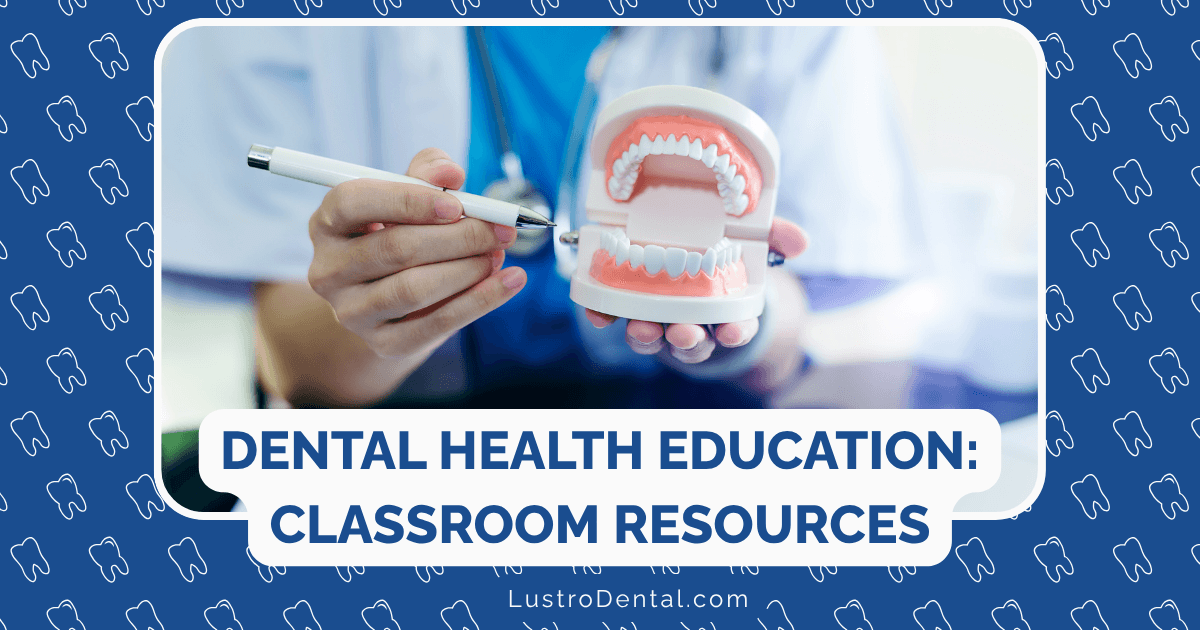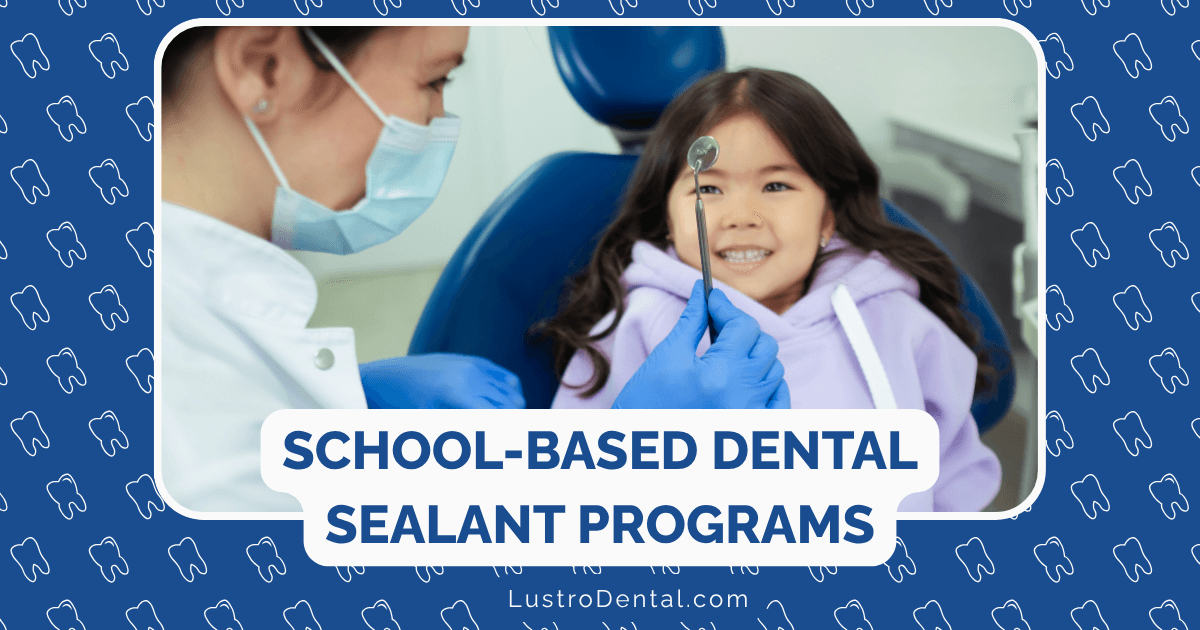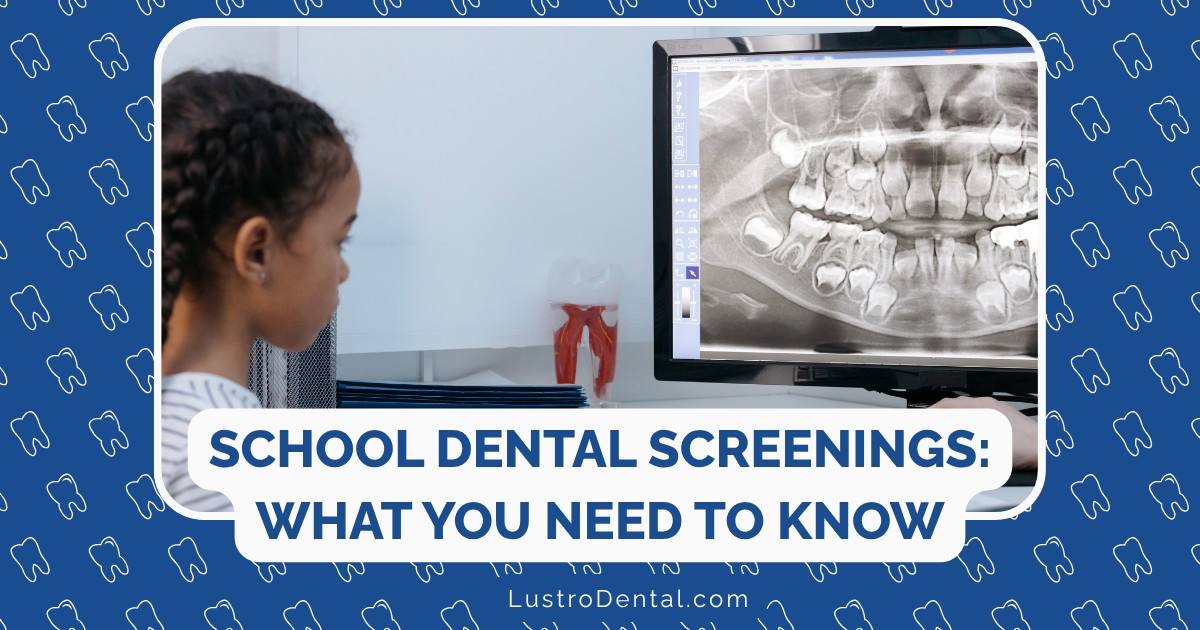What Actually Happens at a Baby’s First Dental Visit? A Photo Journey
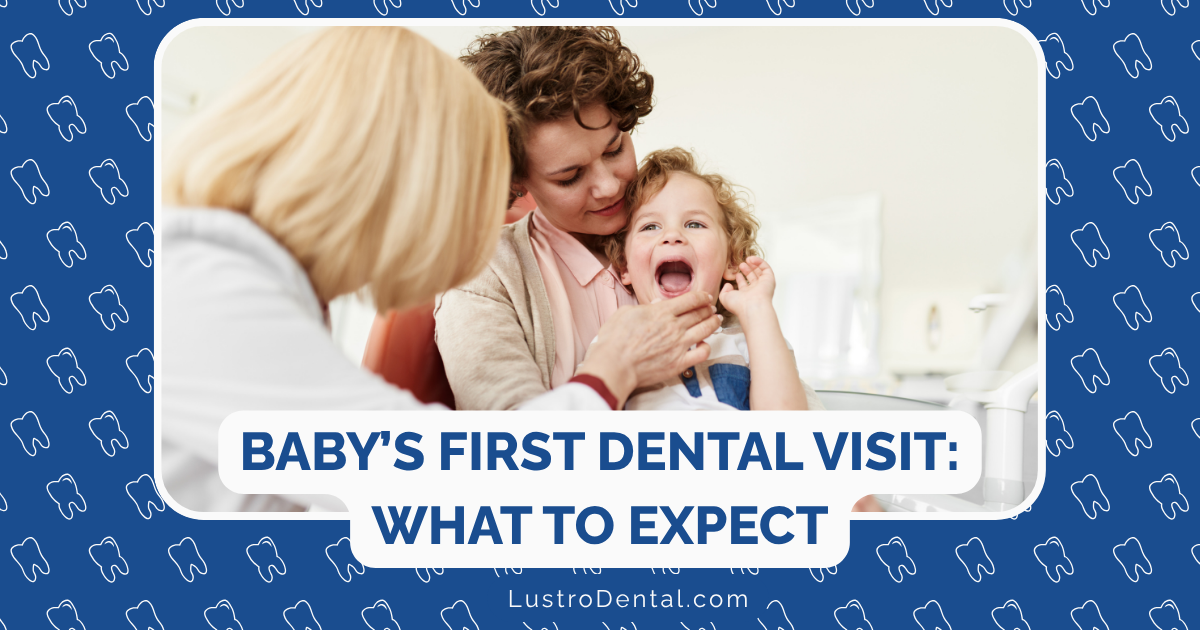
That first tiny tooth poking through your baby’s gums is a milestone worth celebrating—and also your cue to start thinking about their first dental visit. For many parents, this appointment brings questions and sometimes anxiety. What will actually happen? Will my baby cry? Is it really necessary so early?
As someone who’s guided countless families through this important milestone, I want to take you on a visual journey through a typical baby’s first dental visit. Understanding what to expect can help transform this experience from intimidating to empowering for both you and your little one.
When Should That First Visit Happen?
Before we begin our photo journey, let’s address timing. The American Academy of Pediatric Dentistry, the American Dental Association, and the American Academy of Pediatrics all recommend the same timeline: your baby should have their first dental visit by their first birthday or within six months after their first tooth erupts—whichever comes first.
This recommendation surprises many parents who might remember not seeing a dentist until preschool age. However, early visits are crucial for preventing problems before they start and establishing a positive relationship with dental care from the beginning.
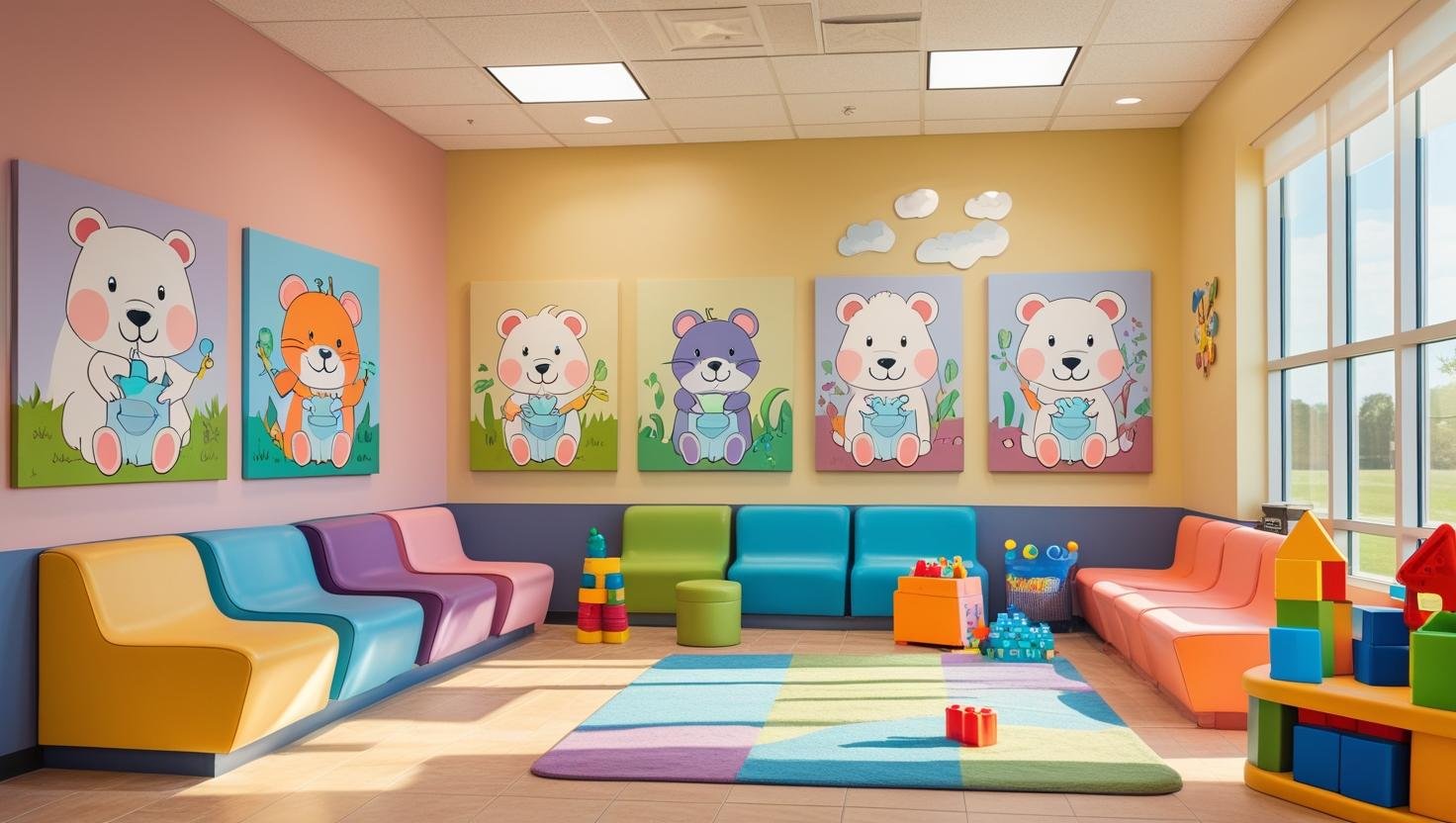
Arriving at the Office: First Impressions Matter
The journey begins in the reception area. Pediatric dental offices are specifically designed to be welcoming to young children, with:
- Bright, cheerful colors
- Child-sized furniture
- Age-appropriate toys and books
- Sometimes even interactive play areas or screens showing children’s programming
Dr. Sarah Johnson of Bright Smiles Pediatric Dentistry explains: “We want children to associate the dental office with fun from the moment they arrive. Our reception area is designed to feel more like a playroom than a medical waiting room.”
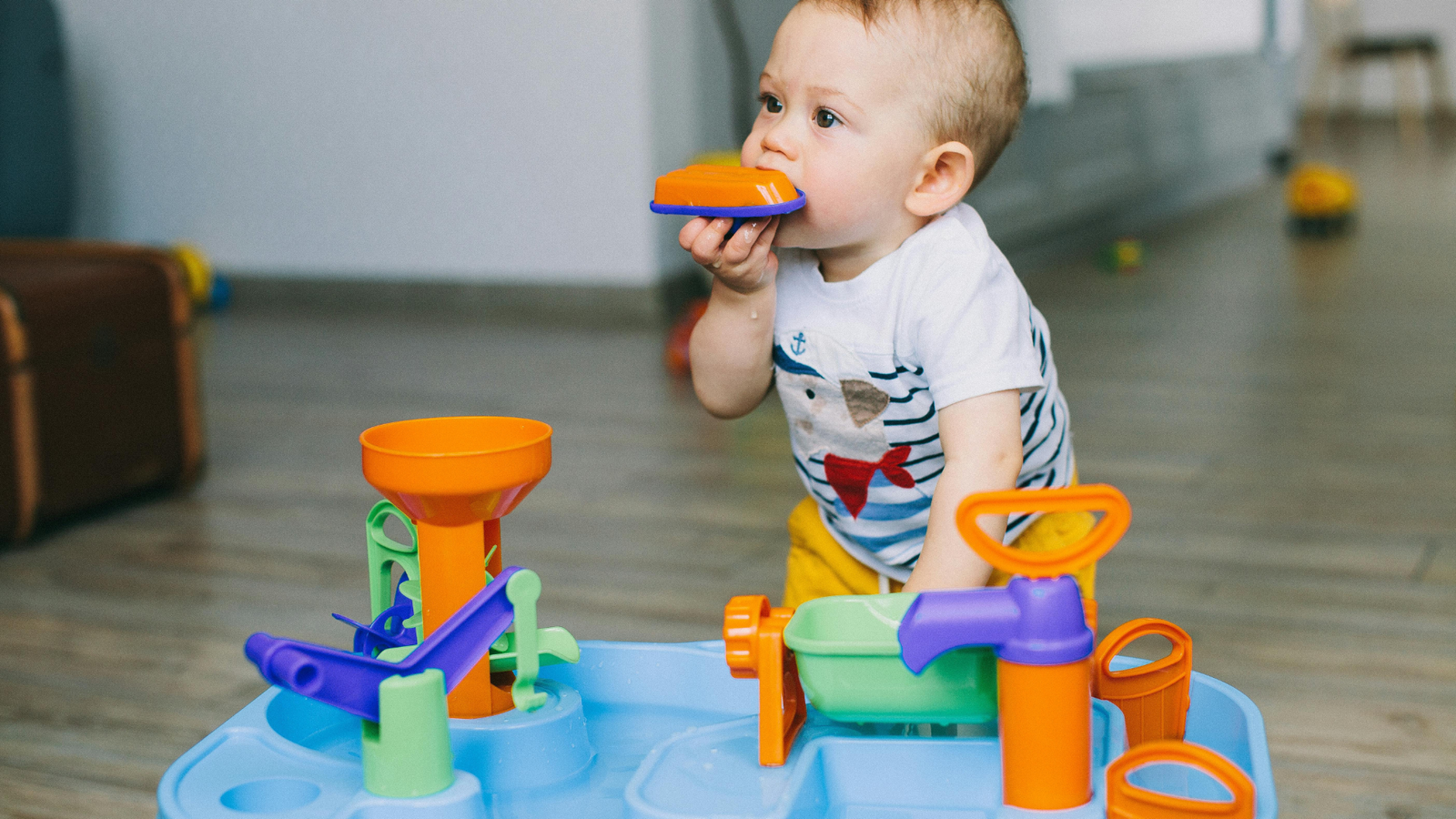
The Paperwork: Important Background Information
While it might seem like standard procedure, the intake forms for your baby’s first visit gather crucial information that helps the dentist provide appropriate care:
- Medical history: Including pregnancy and birth details, as these can affect dental development
- Feeding practices: Breastfeeding, bottle use, and introduction of solid foods
- Oral habits: Pacifier use, thumb sucking, or other comfort habits
- Home care routines: How you’re currently cleaning your baby’s gums or teeth
- Fluoride exposure: Whether your water is fluoridated or your child takes supplements
This information helps the dentist assess your child’s risk factors for dental issues and tailor recommendations specifically to your family’s needs.
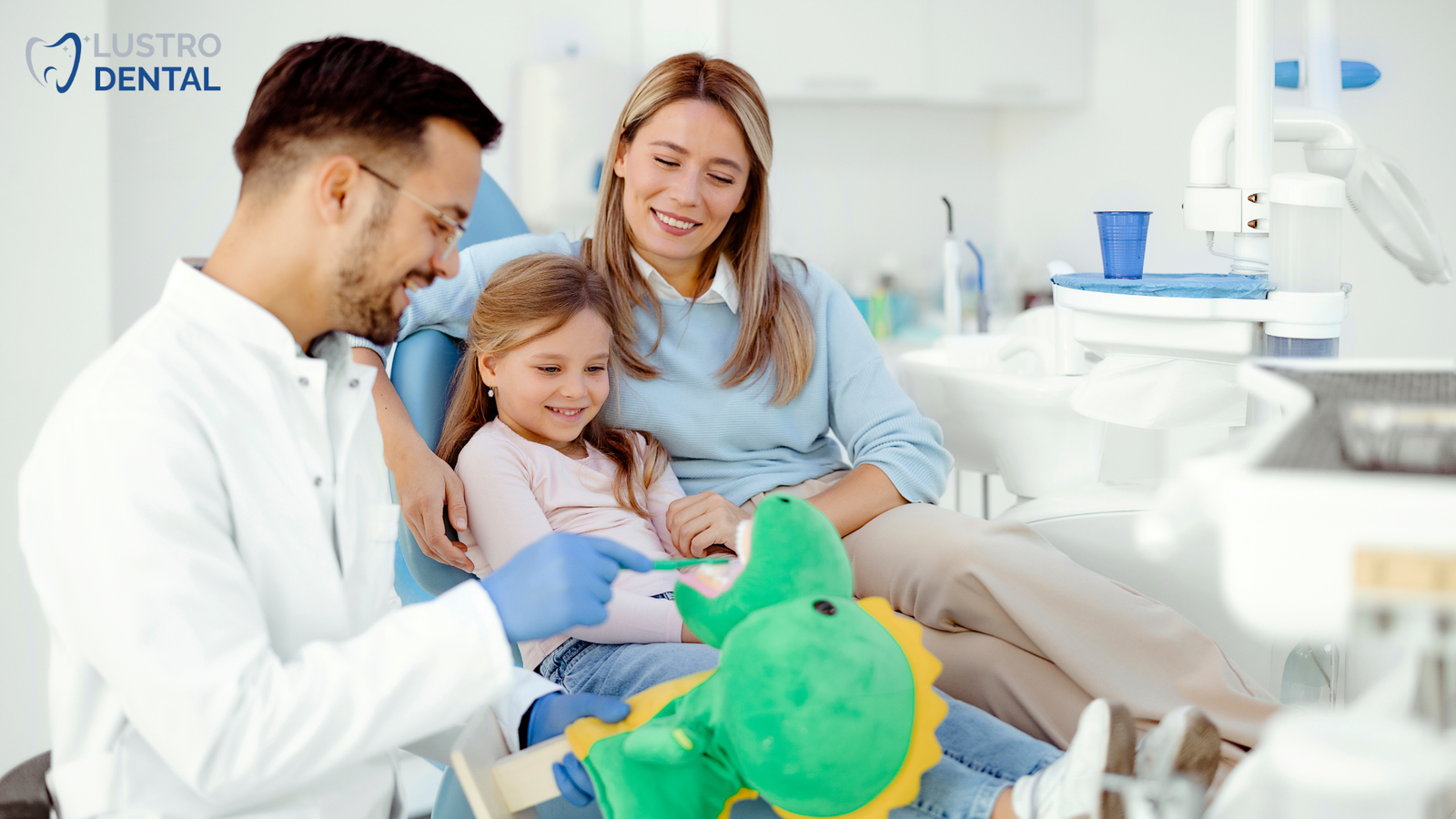
Meeting the Dental Team: Building Trust
The dental team will typically take time to connect with both you and your baby before beginning any examination. This might include:
- Getting down to your baby’s eye level
- Speaking in gentle, positive tones
- Showing your baby some of the tools they’ll be using
- Giving your baby time to become comfortable with new faces
Pediatric dental specialists receive additional training beyond dental school specifically focused on child development and behavior management techniques. They understand how to approach children of different ages and temperaments to create positive experiences.

The Examination Setup: The Knee-to-Knee Position
For babies and young toddlers who aren’t ready to sit independently in a dental chair, the “knee-to-knee” examination is the gold standard approach. Here’s how it works:
- You (the parent) sit in a chair facing the dentist, with your knees touching or nearly touching the dentist’s knees
- Your baby sits on your lap, facing you
- You gently lean your baby back so their head rests in the dentist’s lap
- You hold your baby’s hands while the dentist examines their mouth
This position offers several benefits:
- Your baby can see you throughout the examination
- You can provide comfort through eye contact and reassuring words
- The dentist has good visibility of your baby’s mouth
- Your baby feels secure with your physical contact
Dr. Michael Chen of Children’s Dental Health notes: “The knee-to-knee position transforms what could be a scary experience into something more like a game. The baby remains connected to their parent while we get a good look at their developing teeth and oral structures.”

The Actual Examination: What the Dentist is Looking For
The examination itself typically takes just a few minutes and includes:
Counting and Checking Teeth
The dentist will count how many teeth have erupted and examine each one for:
- Proper development
- Signs of early decay (often appearing as white spots)
- Proper spacing
- Any discoloration
Examining Soft Tissues
Beyond the teeth themselves, the dentist will check:
- The gums for any inflammation or abnormalities
- The tongue and its movement
- The inside of the cheeks
- The roof of the mouth
- The floor of the mouth
Assessing Growth and Development
The dentist will also evaluate:
- Jaw development
- Bite alignment (how the upper and lower teeth come together)
- Signs of habits that might affect development (like prolonged pacifier use)
It’s completely normal for babies to cry during this examination. As Dr. Lisa Williams of Pediatric Dental Associates reassures parents: “A crying baby actually makes our job easier because an open mouth gives us the best view! We’re used to tears and know they don’t mean your baby is traumatized—just expressing themselves in the way they know how.”
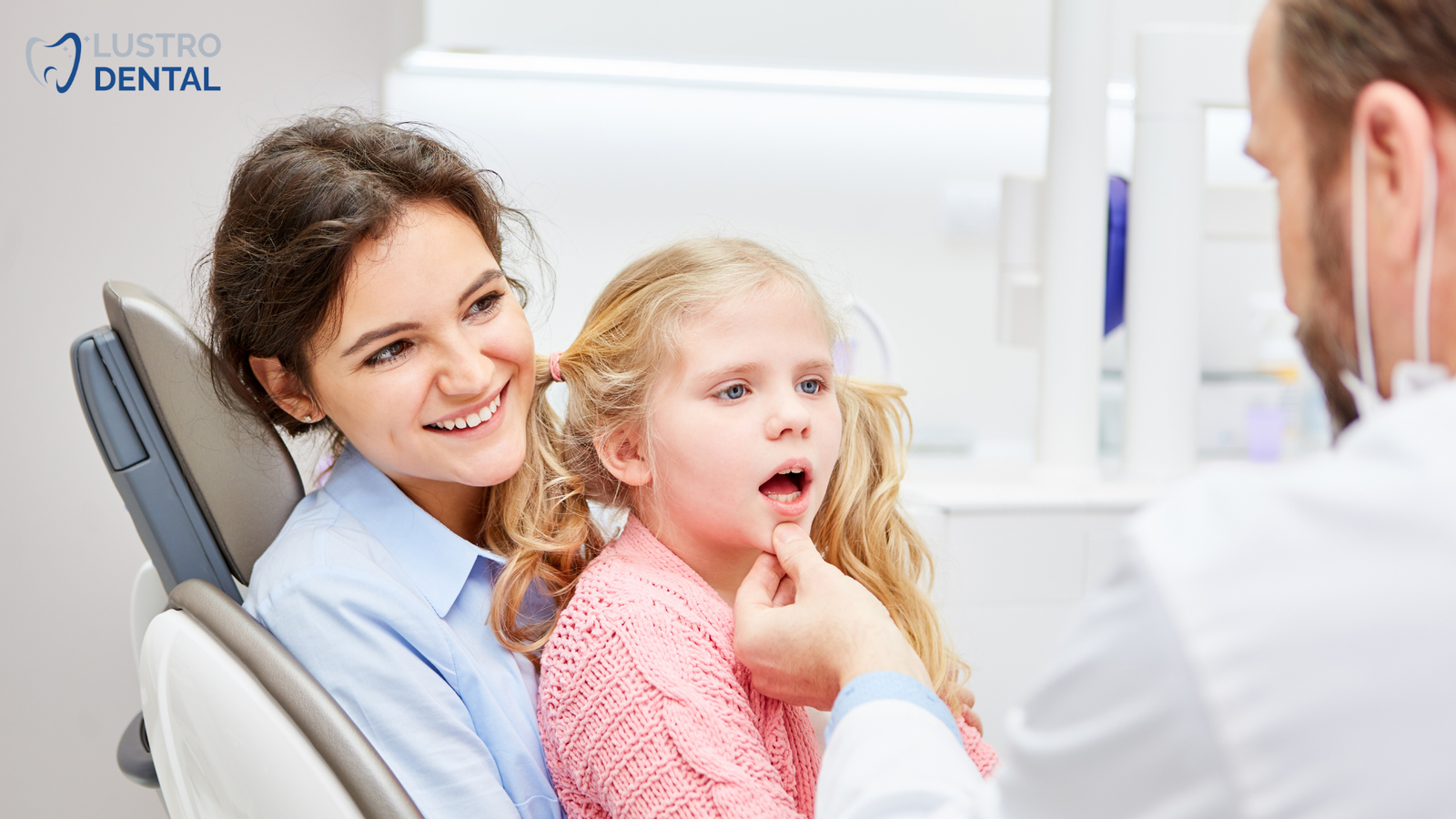
Gentle Cleaning: If Needed
If your baby has several teeth and any plaque buildup, the dentist or hygienist might perform a gentle cleaning. This typically involves:
- Using a soft toothbrush or finger brush
- Demonstrating proper brushing technique for you to use at home
- Showing you how to position your baby for effective cleaning
For most first visits, especially if your baby only has a few teeth, the cleaning portion is brief and focused more on demonstration than extensive plaque removal.

Preventive Care: Fluoride Varnish Application
Depending on your baby’s age, number of teeth, and risk factors, the dentist might recommend applying fluoride varnish—a concentrated form of fluoride that helps prevent tooth decay. The application process is quick:
- The teeth are dried with a gauze pad
- A small brush is used to paint the varnish onto the teeth
- The varnish dries almost immediately
- Your baby can eat and drink right away, though warm foods and tooth brushing should be avoided for a few hours
The American Dental Association reports that fluoride varnish can prevent about one-third of decay in primary teeth when applied twice yearly, making it an important preventive tool.

Parent Education: The Most Important Part
The most valuable component of your baby’s first dental visit is often the education you receive. This typically includes:
Home Care Instructions
- Demonstration of proper brushing techniques for your baby’s age
- Guidance on toothpaste amount (usually a rice-grain sized smear for under 3 years)
- Discussion of when to begin flossing (generally when teeth touch each other)
Nutrition Guidance
- Information about how feeding practices affect dental health
- Discussion of healthy snack choices
- Guidance on limiting sugary drinks and foods
- Tips for transitioning from bottles to cups
Habit Counseling
- Information about pacifiers and thumb sucking
- Guidance on sippy cup use
- Tips for establishing healthy routines
Dr. James Wilson of Pediatric Dental Specialists emphasizes: “The parent education component is where the real prevention happens. We only see your child periodically, but you’re with them every day, influencing their habits and care routines.”

Scheduling the Next Visit: Establishing Regular Care
Before you leave, the office staff will help you schedule your baby’s next visit. For most children, dental visits are recommended every six months. However, if your child has specific risk factors for decay, the dentist might recommend more frequent visits—typically every three to four months.
Many offices provide a small, age-appropriate reward at the end of the visit, such as a sticker, a toy, or a new toothbrush, to create a positive association with the dental experience.

After the Visit: Reinforcing the Experience
Once you’re home, you can help reinforce the positive experience by:
- Talking positively about the visit
- Reading children’s books about dental visits
- Practicing the recommended oral hygiene techniques
- Displaying any “certificates” or photos from the visit
Many parents find it helpful to take photos during the first dental visit (with the dental team’s permission) to create a positive memory and to use when preparing for future visits.
The Value of Starting Early
That baby’s first dental visit lays the foundation for a lifetime of good oral health. By starting early, you’re:
- Establishing the dental office as a familiar, non-threatening place
- Getting personalized guidance before problems develop
- Learning age-appropriate techniques for home care
- Setting your child up for a lifetime of healthy dental habits
Dr. Emily Chen of the American Academy of Pediatric Dentistry sums it up: “We often hear parents say they wish they’d brought their child in sooner. Early visits are simple, positive, and preventive—exactly what we want a child’s introduction to dental care to be.”
Has your baby had their first dental visit? What was your experience like? Share in the comments below!



